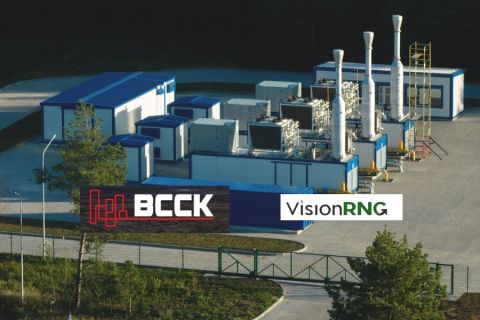Various topics have been on our mind lately, some of which usually generate a visceral reaction in most oil and gas people: Green New Deal, Paris Climate Accord, “Keep it in the ground,” climate change as a national security threat and U.S. energy dominance. We can zoom out on these big picture topics, like global demand for electric vehicles (EVs), or zoom in on specifics closer to home, like the fate of many public small-cap E&Ps. Here’s a look at a few.
Peak demand. Global oil demand has increased for decades, slowed occasionally by recession or other factors. The International Energy Agency’s April Oil Market Report estimated global oil demand would be up another 1.3- to 1.4 million barrels a day this year. We will have more details about all the factors driving oil demand in our July issue, so stay tuned.
EVs. In April, the annual Washington (D.C.) Auto Show took place at a venue close to the White House. Auto industry reps gathered to discuss vehicle electrification, automation and the future of mobility in general. The public ogled the fancy new cars.
President Trump’s proposed fiscal 2020 budget threatens to eliminate the EV tax credit for buyers. But in interviews at the D.C. show, auto industry reps seemed unconcerned. They told reporters they plan to keep introducing more plug-in hybrid and electric vehicles around the globe as the EV market grows.
“It’s a global market, so all automakers are basically active globally. And if you look at China and their regulations, if you want to be a player in the market, you have to have electric cars,” said Pietro Zollino, executive vice president of communications with Volkswagen Group of America, according to ClimateWire newsletter.
China plans to sell 4.6 million electric vehicles by 2020, and hopes to ban the internal combustion engine eventually. It already is the world’s largest EV market, propelled by government subsidies, tax breaks and its goal to reduce air pollution. In March however, China announced it will cut the EV subsidy by more than half in June, and all such subsidies will be eliminated in 2021. The implications are profound for auto makers and air quality.
The Europeans are grappling with fossil fuels’ role too. Norwegian EV passenger sales surpassed traditional autos for the first time in January, taking 52% market share. Back in December the EU set a new target: to reduce car emissions by 37.5% by 2030 when compared with 2021. “This was significantly more aggressive than the European Commission’s original proposal of a 30% reduction,” said a report on the economics of EV manufacturing from McKinsey & Co.
Energy dominance. The same week as the D.C. auto show, President Trump appeared in Crosby, near Houston, to sign two executive orders that would further his energy dominance plans, while speaking at the International Union of Operating Engineers International Training and Education Center, a union facility. The location for Trump’s visit was ironic in the extreme, for while he rolls back environmental regs and Environmental Protection Agency’s (EPA) role, the town of Crosby is the site of the recent chemical fire that caused locals to evacuate, school to be closed and pollution to fill the air. It turns out the plant’s owner had been cited repeatedly for EPA violations in the past.
Several governors have vowed to fight Trump’s plan to accelerate pipeline approvals, citing either state’s rights or protection of local environmental quality. This will end up in the courts.
Scale and return. These topics have been central to conversations about the fate of the E&P universe. You have to wonder, is it all over for publics whose market cap value is below $500 million, or whose stock trades below $5 a share? Should these companies exist, other than as consolidation targets?
Everyone agrees about the need for scale. Achieving it is the best way to fully and economically develop multiple horizontal-well pads throughout a field while lowering costs. It is the only way to have a lower cost of capital—and likely the only way to bring investors back to the sector.
E&P analyst John White of Roth Capital Partners in Houston noted after attending the IPAA’s annual OGIS investor conference in April: “In the larger companies’ presentations we attended, we heard the phases ‘financial discipline, return of capital, dividends and share buybacks’ repeatedly, in line with recent demands from investors.
But, “In 1x1s and hallway conversations with the smaller E&P company executives, we heard ‘How can I grow my business and my PV10% when I am subjected to these yardsticks?’”
Everyone I meet says the industry is at one of the most fascinating yet mysterious junctures they’ve seen, and they cite all of these topics.
Plan now to join us, or send some of your colleagues, at Hart Energy’s DUG East Conference in Pittsburgh on June 19 and 20. You’ll hear from Marcellus and Utica producers and midstream players, as production from these plays takes off. Go to Hartenergy.com for details.
Recommended Reading
Solar Panel Tariff, AD/CVD Speculation No Concern for NextEra
2024-04-24 - NextEra Energy CEO John Ketchum addressed speculation regarding solar panel tariffs and antidumping and countervailing duties on its latest earnings call.
BCCK, Vision RNG Enter Clean Energy Partnership
2024-04-23 - BCCK will deliver two of its NiTech Single Tower Nitrogen Rejection Units (NRU) and amine systems to Vision RNG’s landfill gas processing sites in Seneca and Perry counties, Ohio.
Clean Energy Begins Operations at South Dakota RNG Facility
2024-04-23 - Clean Energy Fuels’ $26 million South Dakota RNG facility will supply fuel to commercial users such as UPS and Amazon.
Romito: Net Zero’s Costly Consequences, and Industry’s ‘Silver Bullet’
2024-04-22 - Decarbonization is generally considered a reasonable goal when presented within the context of a trend, as opposed to a regulatory absolute.




